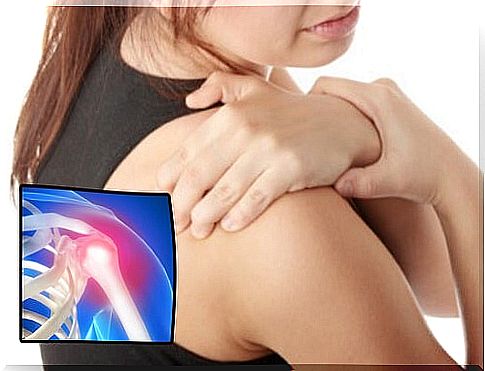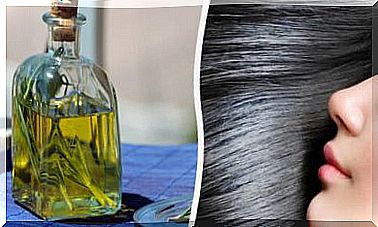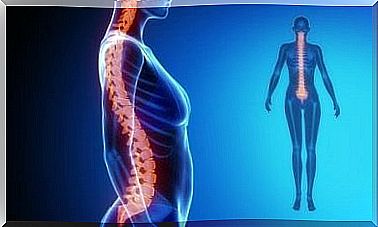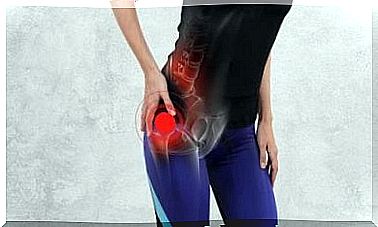How To Prevent And Treat Shoulder Pain

What we all know as shoulders are nothing more than a set of joints, tendons and muscles that allow the arm to move in different directions.
These movements are undoubtedly very important. When the tissues or bone structures become compressed, you begin to feel some discomfort. Find out in this article how to prevent and treat shoulder pain .
What to know about shoulder pain
These movements so important that the shoulders allow us to make can be compromised, for example, when we lift something very heavy, when we make sudden or repetitive movements, etc. The pain can occur for some particular reason and disappear after a while or persist and be felt every night.
It is good to know that the shoulders are made up of three bones: the humerus, the shoulder blade and the collarbone. In the glenoid cavity, which has a rounded shape, the bones, tendons and muscles join.
The tissues of this part are called “rotator cuff” and their function is to cover the “head” of the humerus bone and also to join the scapula with the shoulder. Shoulder problems, aches and pains can be divided into:
Bursitis
This is an inflammation of the bags filled with lubricating fluid that help move the shoulders. They are like cushions placed between bones and soft tissues. They serve to reduce friction when we move our arms.
Excessive use of the shoulders inflames these “bags” located between the rotator cuff and part of the shoulder blade. Bursitis is characterized by the inability to perform daily activities such as combing your hair or dressing.

Tendinitis
It is associated with bursitis because it is also an inflammation, but in this case, of the tendon, a kind of rope that connects muscles and bones. Over the years, it can split into two parts. Tendonitis can affect various tendons and in the case of the shoulders, affect the four found in the rotator cuff and the biceps.
Inflammation of the tendons can be acute (when you always make the same movements with the shoulders upwards, in the direction of the head) or chronic (due to some degenerative diseases, such as arthritis or tendinopathy).
Tears
They occur in the tendons and can be due to repetitive and abrupt movements, sudden injury or old age. The tears can be partial or complete. Injuries to the biceps tendon and rotator cuff are the most common.

Compression
It occurs when the acromion puts pressure on the soft tissue, that is, when the arms are lifted away from the body. When performing the movements, the upper part of the scapula compresses the rotator cuff tendons. It can cause tendonitis or bursitis, a lot of pain and limitation of movement.
Instability
This happens when the “head” of the arm bone is forced out of the shoulder socket, following a blow, fall or injury. It is commonly known as a dislocation and can be partial or complete. When the bone is fixed and returns to its place, it can cause discomfort to perform specific movements.
Osteoarthritis
Pain in either shoulder can also be due to arthritis. One of the most common types is due to wear and tear. Symptoms are inflammation, stiffness, and pain, and they usually show up with age.
It develops little by little and limits the movements. It can also be related to sports or work injuries, but also to rotator cuff tears.

Fracture
It occurs when bones break. In this case it can be a fracture of the clavicle (neck), humerus (arm) or shoulder blade. When the patient is elderly, fractures are mainly due to falls, while in younger patients they can be caused by serious injuries, such as car accidents or contact sports.
Fractures cause acute pain, inflammation and swelling. Gypsum is usually used, but surgery is required in severe cases.
How to get rid of shoulder pain
Exercises are the best way to treat, prevent and improve shoulder pain:
Forward lifting movements
Use an elastic band, which will help you reinforce flexibility. Attach the band to a door or piece of furniture so that it is at waist height. Pull as hard as you can, keeping the arm stiff until it is almost parallel to the floor. Do not exceed the height of the ears with your arms.
Shoulder lift
It is a similar exercise to the previous one, as this also requires the use of an elastic band. Take a flap of the band with your hand and place it at belly level.
With your free hand take the other extreme. Open and close the arm until it is parallel to the floor, hold the position for a few seconds and then return to the starting position.
Lifting backwards
Hook the elastic band to a table leg. Stand in front of the same table. Grab the other end of the band with one hand and stretch your arm back, without going beyond the shoulder line.
Cross body rotation
Still with the band attached to the table, stand to one side and take it with the farthest hand. Bend your elbow and rest it against your body. The only part to move is the wrist outwards. Even if the shoulder moves, you will strengthen the whole arm.
Weightlifting
There is no need to go to the gym or lift huge weights, you can do it with a package of rice, for example, or by filling a 500ml bottle with sand. Raise your arm above your head, stretch it as much as possible and lower it by bending the elbow.









